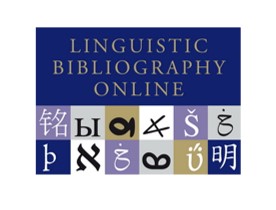O destinatário-visitante presumido nas exposições de divulgação científica do Catavento Cultural
DOI:
https://doi.org/10.11606/issn.2236-4242.v33i3p221-246Palavras-chave:
Destinatário presumido, Círculo de Bakhtin, divulgação científica, Catavento Cultural e Educacional, enunciadoResumo
A teoria dialógica desenvolvida nos trabalhos do Círculo de Bakhtin preconiza que um traço constitutivo do enunciado é seu direcionamento a alguém, ou seja, o fato de estar voltado para seu destinatário, do qual considera pontos de vistas, avaliações, visões de mundo, correntes e teorias presumidamente partilhados. Nesse sentido, a orientação do discurso verbal em função de um interlocutor/leitor tem uma imensa importância no processo de sua construção. Essa orientação se materializa nas escolhas estilísticas, composicionais e temáticas e nas entonações valorativas de todo e qualquer enunciado. Desse modo, considerando as reflexões do Círculo bakhtiniano, este trabalho objetiva analisar os enunciados verbo-visuais que compõem as exposições de divulgação científica veiculadas pela instituição Catavento Cultural e Educacional, situada em São Paulo, buscando ressaltar a quem são endereçados os enunciados das exposições e como esse direcionamento se reflete nos elementos essenciais do enunciado expositivo. A análise empreendida revelou que o visitante-destinatário é inscrito de modo distinto a partir da percepção do seu fundo aperceptível de conhecimento pelo autor e da relação desse com o objeto.
Downloads
Referências
AMORIM. M. O pesquisador e seu outro: Bakhtin nas ciências humanas. São Paulo: Marsa Editora, 2001.
ASSOCIAÇÃO BRASILEIRA DE CENTROS E MUSEUS DE CIÊNCIA. Centros e museus
de ciência do Brasil. Rio de Janeiro: UFRJ.FCC. Casa da Ciência; Fiocruz. Museu da Vida, 2015.
BAKHTIN, M. Problemas da poética de Dostoiévski. Tradução de Paulo Bezerra. 4. ed. Rio de
Janeiro: Forense Universitária, 2008[1963].
BAKHTIN, M. Diálogo I. A questão do discurso dialógico. In: BAKHTIN, M. Os gêneros do
discurso. Tradução de Paulo Bezerra. São Paulo: Editora 34, 2016[1950], p. 113-124.
BAKHTIN, M. Diálogo II. In: BAKHTIN, M. Os gêneros do discurso. Tradução de Paulo Bezerra. São Paulo: Editora 34, 2016[1952], p. 125-150.
BAKHTIN, M. O Problema do texto na linguística, na filologia e outras ciências humanas. In:
BAKHTIN, M. Os gêneros do discurso. Tradução de Paulo Bezerra. São Paulo: Editora 34, 2016
-1961], p. 71-107.
CASTILHO, A. T. Nova gramática do português brasileiro. São Paulo: Contexto, 2010.
CHELINI, M. J. E.; LOPES, S. G. B. de C. Textos em museus de ciências: discurso científico,
didático ou de divulgação? In: BENCHETRIT, S. F.; BEZERRA, R. Z.; MAGALHÃES,
A. M. (Orgs). Museus e Comunicação: exposição como objeto de estudo. Rio de Janeiro: Museu
Histórico Nacional, 2010.
SOARES, M. Letramento: um tema em três gêneros. Belo horizonte: Autêntica, 1998.
STUDART, D. C.; ALMEIDA, A. M.; VALENTE, M. E. Pesquisa de público em museus:
desenvolvimento e perspectivas. In: GOUVÊA, G., MARANDINO, M., LEAL. M.C (Orgs.).
Educação e museu: a construção social do caráter educativo dos museus de ciência. Rio de Janeiro:Access, 2003, p. 129-157.
VOLOCHÍNOV, V. Marxismo e filosofia da linguagem: problemas fundamentais do método
sociológico na ciência da linguagem. Tradução de Sheila Viera de Camargo Grillo e Ekaterina
Vólkova Américo. São Paulo: Editora 34, 2017[1929].
VOLÓCHINOV, V. A palavra na vida e a palavra na poesia para uma poética sociológica. In:
A palavra na vida e a palavra na poesia: ensaios, artigos, resenhas e poemas. Tradução de Sheila
Grillo e Ekaterina Vólkova Américo. São Paulo: Editora 34, 2019[1926], p. 109-146.
VOLÓCHINOV, V. A construção do enunciado e outros ensaios. Tradução de Sheila Grillo e Ekaterina Vólkova Américo. São Paulo: Editora 34, 2019[1930], p. 255-305.
Publicado
Edição
Seção
Licença
Copyright (c) 2020 Arlete Machado Fernandes Higashi

Este trabalho está licenciado sob uma licença Creative Commons Attribution-NonCommercial 4.0 International License.
A aprovação dos manuscritos implica cessão imediata e sem ônus dos direitos de publicação para a Linha D'Água. Os direitos autorais dos artigos publicados pertencem à instituição a qual a revista encontra-se vinculada. Em relação à disponibilidade dos conteúdos, a Linha D'Água adota a Licença Creative Commons, CC BY-NC Atribuição não comercial. Com essa licença é permitido acessar, baixar (download), copiar, imprimir, compartilhar, reutilizar e distribuir os artigos, desde que para uso não comercial e com a citação da fonte, conferindo os devidos créditos autorais à revista.
Nesses casos, em conformidade com a política de acesso livre e universal aos conteúdos, nenhuma permissão é necessária por parte dos autores ou do Editor. Em quaisquer outras situações a reprodução total ou parcial dos artigos da Linha D'Água em outras publicações, por quaisquer meios, para quaisquer outros fins que sejam natureza comercial, está condicionada à autorização por escrito do Editor.
Reproduções parciais de artigos (resumo, abstract, resumen, partes do texto que excedam 500 palavras, tabelas, figuras e outras ilustrações) requerem permissão por escrito dos detentores dos direitos autorais.
Reprodução parcial de outras publicações
Citações com mais de 500 palavras, reprodução de uma ou mais figuras, tabelas ou outras ilustrações devem ter permissão escrita do detentor dos direitos autorais do trabalho original para a reprodução especificada na revista Linha D'Água. A permissão deve ser endereçada ao autor do manuscrito submetido. Os direitos obtidos secundariamente não serão repassados em nenhuma circunstância.











